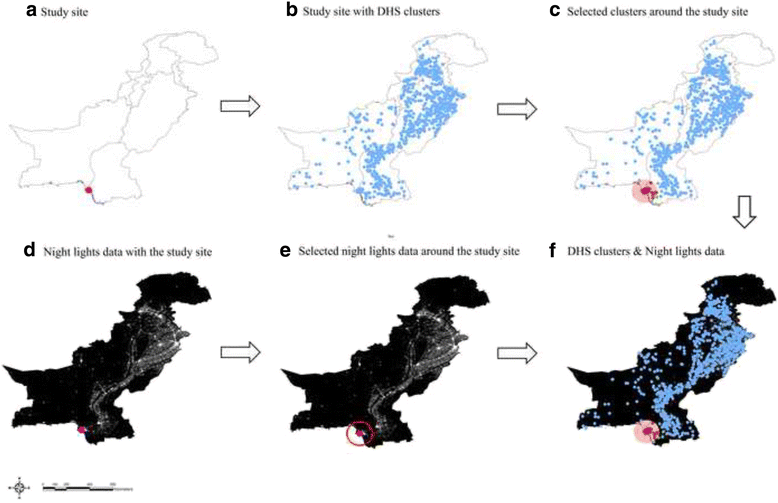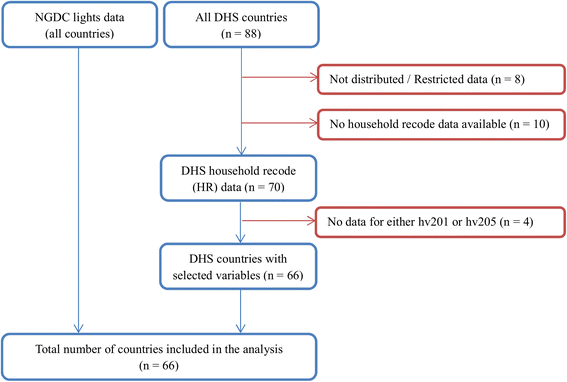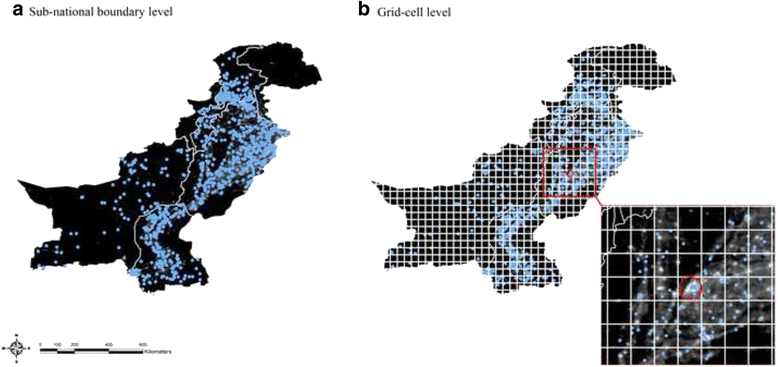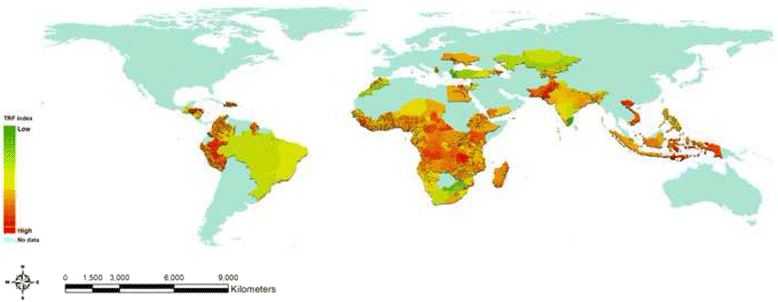Geographical distribution of typhoid risk factors in low and middle income countries
- PMID: 27919235
- PMCID: PMC5139008
- DOI: 10.1186/s12879-016-2074-1
Geographical distribution of typhoid risk factors in low and middle income countries
Abstract
Background: While the global burden of typhoid fever has been often brought up for attention, the detailed surveillance information has only been available for the limited number of countries. As more efficacious vaccines will be available in the near future, it is essential to understand the geographically diverse patterns of typhoid risk levels and to prioritize the right populations for vaccination to effectively control the disease.
Methods: A composite index called the typhoid risk factor (TRF) index was created based on data with the Global Positioning System (GPS). Demographic and Health Surveys (DHS) and National Geographical Data Center (NGDC) satellite lights data were used for this analysis. A count model was adopted to validate the TRF index against the existing surveillance burden data. The TRF index was then re-estimated for 66 countries using the most recent data and mapped out for two geographical levels (sub-national boundary and grid-cell levels).
Results: The TRF index which consists of drinking water sources, toilet facility types, and population density appeared to be statistically significant to explain variation in the disease burden data. The mapping analysis showed that typhoid risk levels vary not only by country but also by sub-national region. The grid-cell level analysis highlighted that the distribution of typhoid risk factors is uneven within the sub-national boundary level. Typhoid risk levels are geographically heterogeneous.
Conclusions: Given the insufficient number of surveillance studies, the TRF index serves as a useful tool by capturing multiple risk factors of the disease into a single indicator. This will help decision makers identify high risk areas for typhoid as well as other waterborne diseases. Further, the study outcome can guide researchers to find relevant places for future surveillance studies.
Keywords: Composite index; Disease mapping; Risk factors; Typhoid.
Figures






References
-
- Mogasale V, Maskery B, Ochiai RL, Lee JS, Mogasale VV, Ramani E, Kim YE, Park JK, Wierzba TF. Burden of typhoid fever in low-income and middle-income countries: a systematic, literature-based update with risk-factor adjustment. Lancet Glob Health. 2014;2(10):e570–e580. doi: 10.1016/S2214-109X(14)70301-8. - DOI - PubMed
MeSH terms
LinkOut - more resources
Full Text Sources
Other Literature Sources
Research Materials

